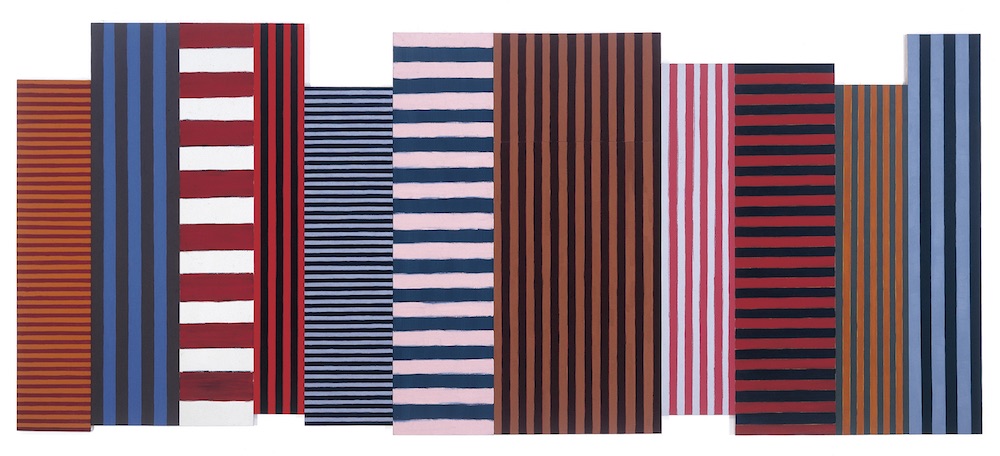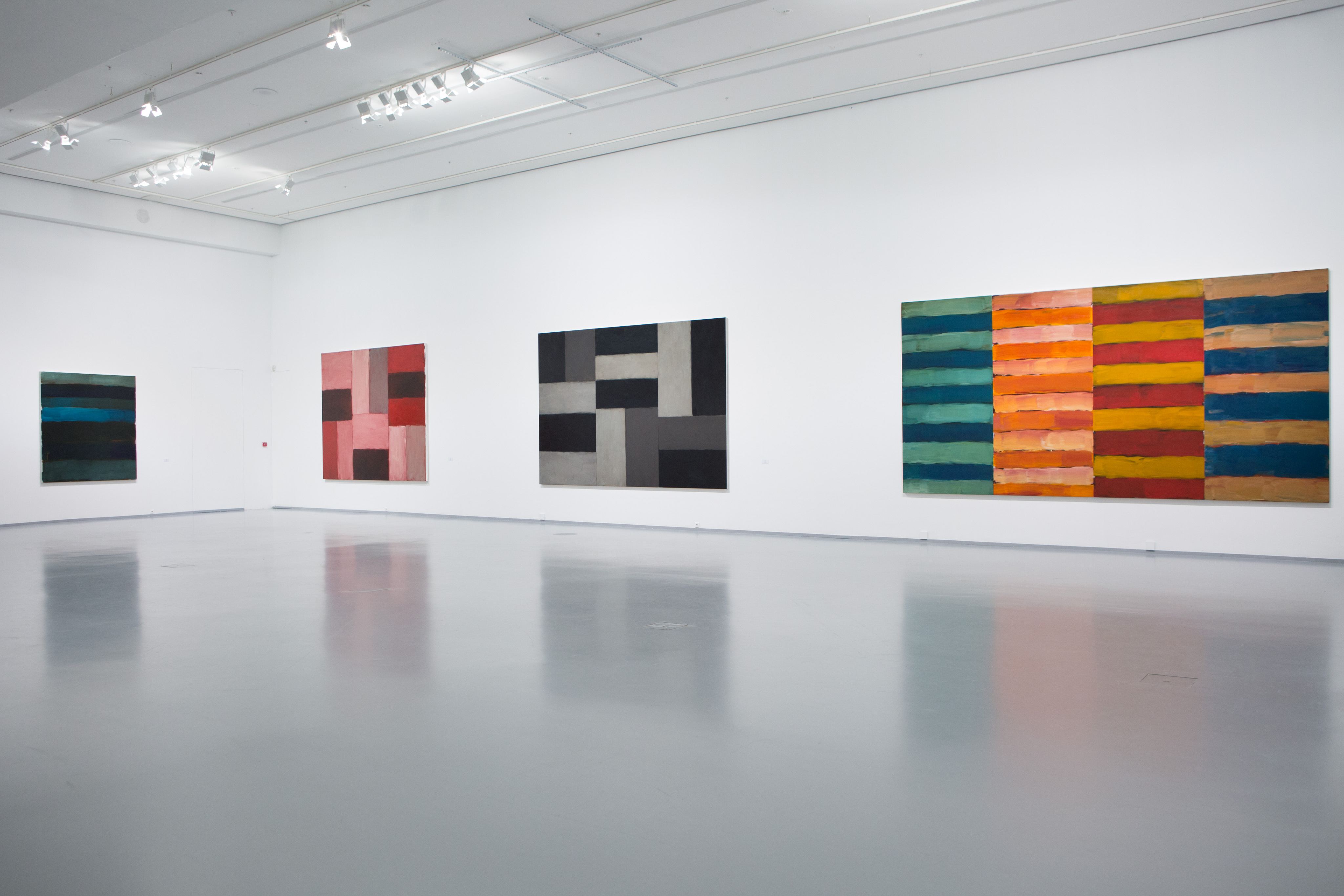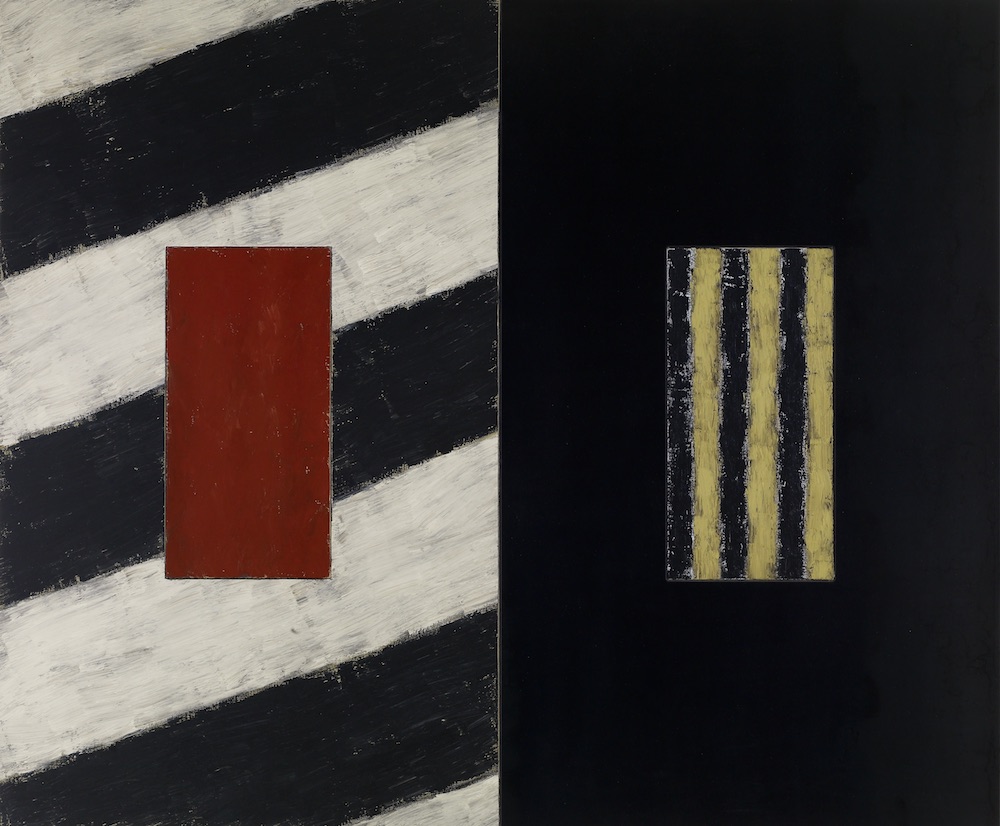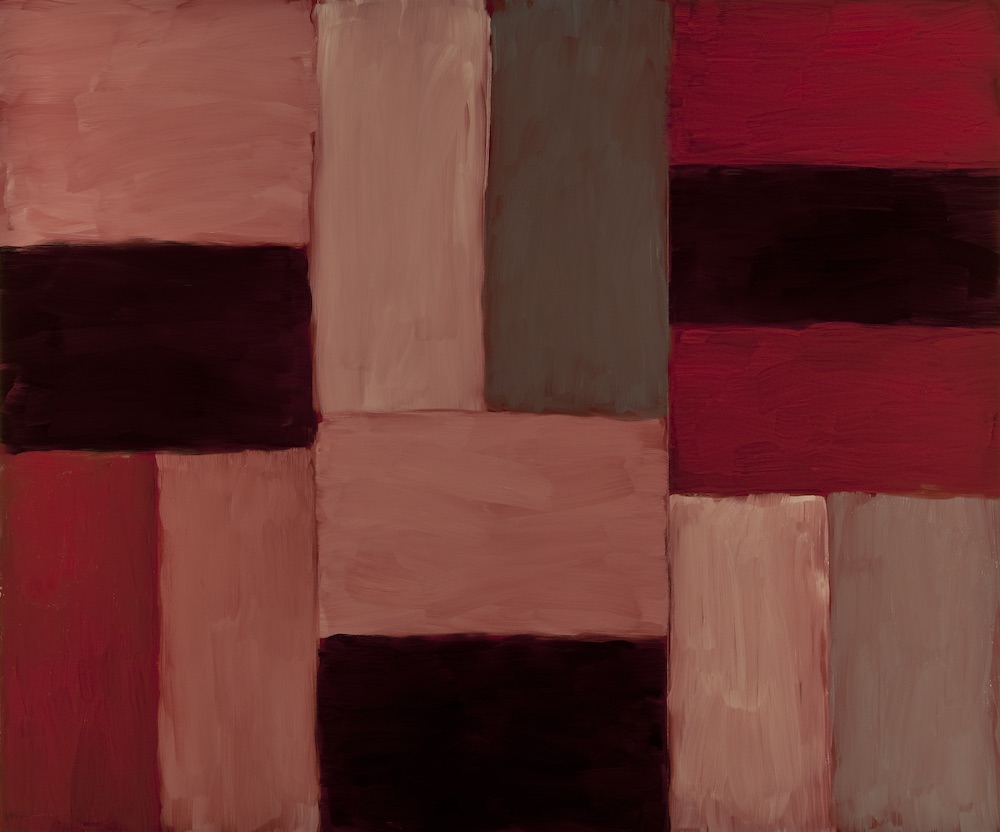
All human life is defined by boundaries—from the garden fence to the border between states. Boundaries tell us who we are. Me and not you or them. They divide the physical from the metaphysical, one side of the river from the other. Sometimes they involve choice. Other times war. Sometimes they are permeable. On other occasions rigid. We create them for our physical safety and, occasionally, we are brave enough to let them dissolve when we want to get close to others either personally or politically.
“Where does he belong except to the language and landscape of paint?”
Moscow, then, could not be a more pertinent city for Sean Scully to show his work in Facing East, this first major exhibition at Multimedia Art Moscow. Not quite Europe, not quite Asia, the fault line for so long between the so-called free world and communism, the city provides, with its backdrop of extraordinary art—from the Kremlin frescoes to the stunning Impressionists in the Pushkin Museum—the perfect mise en scène for Scully’s work. The notion of borders also reflects something more personal, Scully’s comparative statelessness. An artist of Irish origin, he grew up largely in London and went to English art schools, though he has lived and worked much of his life in Barcelona, Germany and New York. How, then should such a peripatetic artist define himself? Where does he belong except to the language and landscape of paint?

Scully is a painter who divides artists and critics. There are those who see him simply as painting grids in the modernist tradition, or as a Romantic whose beautiful brush marks continue to seduce the viewer in an age of hard-edged conceptualism. But that, I believe, is to misunderstand the timeless metaphysics of these paintings. The struggle, the journey. Like a Russian Orthodox monk who sings the limited repertoire of notes of a Gregorian chant over and over, or a Japanese haiku master who constantly returns to the same poetic form of 5/7/5, Scully uses the constraints of the grid to go deeper and further into the terrain of the metaphysical. In the early twentieth century, Alexander Rodchenko tried to uncover the very foundations of painting and explore its molecular and atomic components in line and colour. Kandinsky saw music “as the ultimate teacher” of the painter, ideas that he explored when writing about his Christian eschatology in Concerning the Spiritual in Art. Whilst Scully’s work, by comparison, is secular art for a secular age, he is still compelled by what Kandinsky called “an internal necessity”, where one boundary presses up against another with a sense of purpose or dissolves and shrinks away from its adjacent companion.
The thirty paintings, watercolours, mixed-media compositions and pastels featured in Moscow chronicle Scully’s rise to artistic heights. As the art critic and cultural philosopher Arthur Danto insisted, he “belongs on the shortest of shortlists of the major painters of our time.” As we move through the exhibition, from the sole figurative study undertaken in 1967 to the comparative sparseness of the Landlines created half a century later, we travel with the artist as he develops his thinking and approach. The cartography of these deceptively simple latitudinal and longitudinal stripes, refined over a period of fifty years, transcend the materiality of paint to become coordinates that map inner landscapes. To appropriate John Berger’s famous phrase, they provide the viewer—if the viewer is willing or able to engage with an open mind—new “ways of seeing”. For as Kazimir Malevich remarked: “Reality can never be attained or perceived.”

The Moscow space heralds the visitor with Scully’s large wall of tight horizontal and vertical stripes, Backs and Fronts from 1981. This painting, comprising eleven separate panels of different dimensions and proportions of stripes, started out as four musicians in a homage to Scully’s friend Pablo Picasso, who painted three musicians. But three were not enough for Scully, so he made it four. Slowly other panels were added like performers joining a band. Finally, as it evolved over time, the painting acquired its new name, suggestive of the buildings in New York where Scully has lived for much of his life. Like Grey, 1973, with its strict diagonal logic and Black Composite, 1974, Backs and Fronts denotes a more rigorous formal period of Scully’s work, which is tighter and more constrained than the humane fluidity of his later work. In Moscow, Passenger Red White (1999) has been hung high up alongside Backs and Fronts in acknowledgement of Malevich.
“They display the confidence of one who has developed a fluency in his own chosen language that allows the viewer to conjure imagined horizons and landscapes.”
By 1991, Facing East shows a greater relational association between the lines and rectangular forms than is in evidence in the complex layered grid of, say, Backcloth, 1970. In Facing East, there’s a binary tension between dark and light, between what is disclosed and kept hidden. The central ochre rectangle in the left half of the painting and the black bars that cut across the lighter yellowish tone emitted from the central rectangle in the dark right-hand section imply, as in a Rothko, a place beyond the flatness of the surface. As viewers we are invited into other dimensions, into perspectival depths. While in Red Chamber, 2012 the Guston-like pinks and reds take on an altogether hotter, more sensual tone. One that suggests flesh and speaks obliquely of the body and human connections.

When we come to the Landline paintings these show the thinking of a mature artist who no longer worries about debates around formalism or the battle between pure abstraction and figuration. They display the confidence of one who has developed a fluency in his own chosen language that allows the viewer to conjure imagined horizons and landscapes. Here we see the blue-blacks of darkening evening abutted by the shadowy green horizontals of the land where the light is fading. Flickers of yellow break through this dimming veil like the last moments of the dying day. While in Four Days, each period is defined by the almost synaesthesiac colours that express the mood of individual days to remind us that vision is, in fact, a complex sense, one that relies on memories of smell, atmosphere, touch and even hearing, as well as what we absorb with our eyes.

In Arles-Abend-Vincent 2 we become witnesses to the struggle of each rectangle and colour to hold its own, to speak in its distinct voice beside that of its neighbour. There is the insistence of separate blocks both to their unique and separate individuality, as well as the need for connection. Although entirely abstract, these slabs of colour and the negative spaces between them speak as much about human relationships as Morandi’s delicate anthropomorphic bottles.
That Scully, like Kandinsky, wants his art to aspire to “something like the condition of music” is hardly a surprise. He rarely works without listening to music, for music is at one and the same time the most abstract and inchoate of the art forms, the most sinuous and fluid, yet also the one that can most directly pierce the psyche. This piercing is what Roland Barthes calls a punctum, that sudden stab of recognition sharp as a wound that comes with all good art. For Scully it is apparent that paint allows something of the same freedom as music to explore philosophical and poetic ideas, emotions and experiences, without ever having to express or name them directly. It is this depth of emotion that Sean Scully—a big, laconic, physically forbidding man who was once a judo black belt—reaches towards with such delicacy and sensibility.

Facing East
Until 10 December at Multimedia Art Museum, Moscow
mamm-mdf.ru
All artwork images courtesy the artist © Sean Scully





